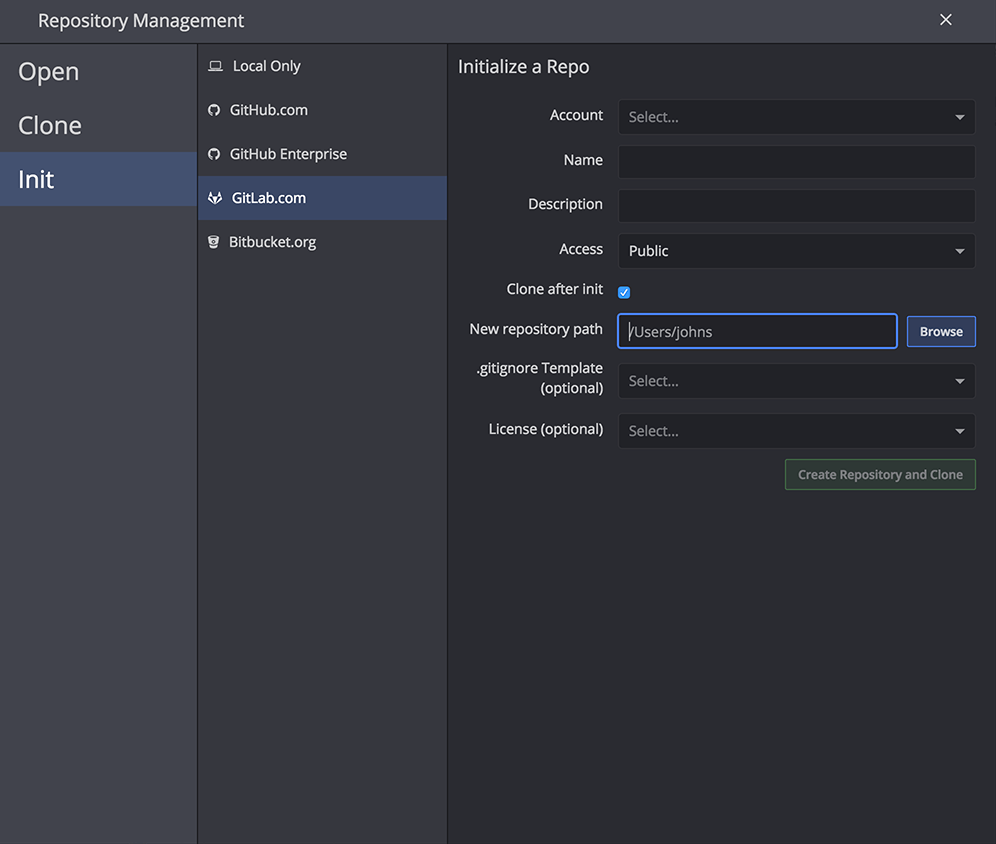

At this point, you are ready to start working with a repository. Once you sign in, GitKraken will take you to it’s welcome screen. When connecting GitHub to GitKraken, make sure that the authorization is performed on either Chrome or Firefox and not on Internet explorer.

Open it, and sign in using the credentials you used to sign up for a GitHub account. Most of you should have already installed GitKraken. Since we are going to be using GitHub we will need to register for an account at GitHub if we don’t already have one.
Difference between clone repo and init repo in gitkraken how to#
Here is a glossary of associated terms, however it is best to pick up terminology while learning how to use GitHub. Some of the commands/terms are fairly self-explanatory, others less so, and in this workshop you will encounter both of these. One of the trickier aspects of using Git is the associated jargon ( repository, add, commit, pull, push, remote, detached head). Two examples of GUIs are GitHub Desktop and GitKraken.Īlthough there are several advantages to using the command line version of Git in the long run, a GUI is a great place to start with learning about Version Control. However, there are several tools that enable the use of Git easily for novices using a Graphical User Interface (GUI), enabling a point-and-click interface. a terminal interface from a UNIX/Linux OS. Usually when programmers use Git for version control of their code, they use the command-line user interface, i.e. Getting Started with Git using a GUI (Graphical User Interface) In this lesson the focus will be on gaining an understanding of the basic aims and principles of Version Control by working with a plain text document using Git (GitKraken & GitHub). Previous: Introduction to Version Control Getting Started with Git using GitKraken | Introduction to Version Control (GitKraken/Github) Introduction to Version Control (GitKraken/Github) GitKraken lesson (forked from HBS-RCS) View on GitHub


 0 kommentar(er)
0 kommentar(er)
